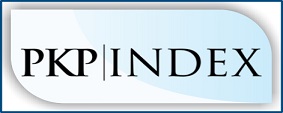HUBUNGAN JENIS KELAMIN DENGAN KALSIFIKASI AORTA PADA RADIOGRAFI TORAKS
DOI:
https://doi.org/10.31004/prepotif.v6i3.7448Keywords:
Atherosclerosis, Gender, Chest Radiograph.Abstract
Atherosclerosis is an asymptomatic condition and one of the leading causes of heart attacks and strokes, which is the leading cause of death worldwide. Atherosclerosis that appears as a calcification in the aortic arch can be detected by chest radiograph. The exact cause of atherosclerosis is unknown, but the Framingham Heart Study states that gender is one of the risk factor that increases the incidence of cardiovascular disease. This research aims to determine the relationship between gender and aortic calcification on chest radiograph. This research was conducted by using the analytical observasional method with a cross-sectional approach. The data taken was the data contained in the chest radiograph of patients who have had a chest radiograph at the Rumah Sakit Royal Taruma Jakarta Barat in January 2022 using a consecutive sampling that adjusted to the inclusion and exclusion criteria. The collected samples were subsequently analysed by using Pearson Chi-square test with Statistical Product and Service Version 26. From total 160 samples, grade 0 aortic arch calcification was showed in 9 men (11.3%) and 21 women (26.3%), grade 1 in 30 men (37.5%) and 33 women (41.3%), grade 2 in 31 men (38.8%) and 21 women (26.3%), grade 3 in 10 men (12.5%) and 5 women (6.3%). The conclusion of this study was that there was a significant relationship between gender and aortic calcification on chest radiograph at the Rumah Sakit Royal Taruma Jakarta Barat with p-value = 0.036 (p-value < 0.05).References
Aziz, M., & Yadav, K. S. (2016). Pathogenesis of Atherosclerosis a Review. Med Clin Rev, 2(3), 1–6.
Centers for Disease Control and Prevention. (2021). Coronary Artery Disease (CAD). https://www.cdc.gov/heartdisease/coronary_ad.htm
Cullen, P., Rauterberg, J., & Lorkowski, S. (2005). The Pathogenesis of Atherosclerosis. Handb Exp Pharmacol, 170(3).
Fairweather, D. (2014). Sex Differences in Inflammation during Atherosclerosis. Clinical Medicine Insights: Cardiology, 8, 49–59. https://doi.org/10.4137/CMC.S17068
Hajar, R. (2017). Risk Factors for Coronary Artery Disease: Historical Perspectives. Heart Views: The Official Journal of the Gulf Heart Association, 18(3), 109.
Han, S. H., Bae, J. H., Holmes Jr, D. R., Lennon, R. J., Eeckhout, E., Barsness, G. W., Rihal, C. S., & Lerman, A. (2008). Sex Differences in Atheroma Burden and Endothelial Function in Patients with Early Coronary Atherosclerosis. European Heart Journal, 29(11), 1359–1369.
Kementerian Kesehatan RI. (2018). Hasil Utama Riskesdas 2018. Badan Penelitian dan Pengembangan Kesehatan.
Kröger, K., Suckel, A., Hirche, H., & Rudofsky, G. (1999). Different Prevalence of Asymptomatic Aatherosclerotic Lesions in Males and Females. Vascular Medicine, 4(2), 61–65.
Kurnia, E., & Prayogi, B. (2015). Faktor Jenis Kelamin, Genetik, Usia, Tingkat Stress dan Hipertensi sebagai Faktor Resiko Penyakit Jantung Koroner. Jurnal STIKES RS Baptis Kediri, 8(1), 64–75. https://jurnal.stikes baptis.ac.id/index.php/STIKES/article/view/107/87
Liyanage, L., Lee, N. J., Cook, T., Herrmann, H. C., Jagasia, D., Litt, H., & Han, Y. (2016). The Impact of Gender on Cardiovascular System Calcification in Very Elderly Patients with Severe Aortic Stenosis. The International Journal of Cardiovascular Imaging, 32(1), 173–179.
Loscalzo, J. (2016). Harrison’s Cardiovascular Medicine (3rd ed.). McGraw-Hill Education.
Maas, A. H. E. M., & Appelman, Y. E. A. (2010). Gender Differences in Coronary Heart Disease. Netherlands Heart Journal, 18(12), 598–603.
Man, J. J., Beckman, J. A., & Jaffe, I. Z. (2020). Sex As a Biological Variable in Atherosclerosis. Circulation Research, 126(9), 1297–1319.
NHLBI. (2022). What is Atherosclerosis? Nhlbi.Nih.Gov. https://www.nhlbi.nih.gov health/atherosclerosis
Psaty, B. M., Heckbert, S. R., Atkins, D., Siscovick, D. S., Koepsell, T. D., Wahl, P. W., Longstreth, W. T., Weiss, N. S., Wagner, E. H., & Prentice, R. (1993). A Review of the Association of Estrogens and Progestins with Cardiovascular Disease in Postmenopausal Women. Archives of Internal Medicine, 153(12), 1421–1427.
Rafieian-Kopaei, M., Setorki, M., Doudi, M., Baradaran, A., & Nasri, H. (2014). Atherosclerosis: Process, Indicators, Risk Factors and New Hopes. International Journal of Preventive Medicine, 5(8), 927.
World Health Organization. (2021). Cardiovascular Diseases. World Health Organization (WHO). https://www. who.int/health-topics/cardiovascular-diseases
Wren, B. G., & Wren, B. G. (1992). The Effect of Oestrogen on the Female Cardiovascular System. Medical Journal of Australia, 157(3), 204–208.
Xing, D., Nozell, S., Chen, Y.-F., Hage, F., & Oparil, S. (2009). Estrogen and Mechanisms of Vascular Protection. Arteriosclerosis, Thrombosis, and Vascular Biology, 29(3), 289–295.
Downloads
Published
How to Cite
Issue
Section
License
Copyright (c) 2023 Elizabeth Katherine Tanzil, Inge Friska Widjaya

This work is licensed under a Creative Commons Attribution-ShareAlike 4.0 International License.
Authors who publish with this journal agree to the following terms:
- Authors retain copyright and grant the journal right of first publication with the work simultaneously licensed under a Creative Commons Attribution License that allows others to share the work with an acknowledgement of the work’s authorship and initial publication in this journal.
- Authors are able to enter into separate, additional contractual arrangements for the non-exclusive distribution of the journal’s published version of the work (e.g., post it to an institutional repository or publish it in a book), with an acknowledgement of its initial publication in this journal.
- Authors are permitted and encouraged to post their work online (e.g., in institutional repositories or on their website) prior to and during the submission process, as it can lead to productive exchanges, as well as earlier and greater citation of published work (See The Effect of Open Access).











